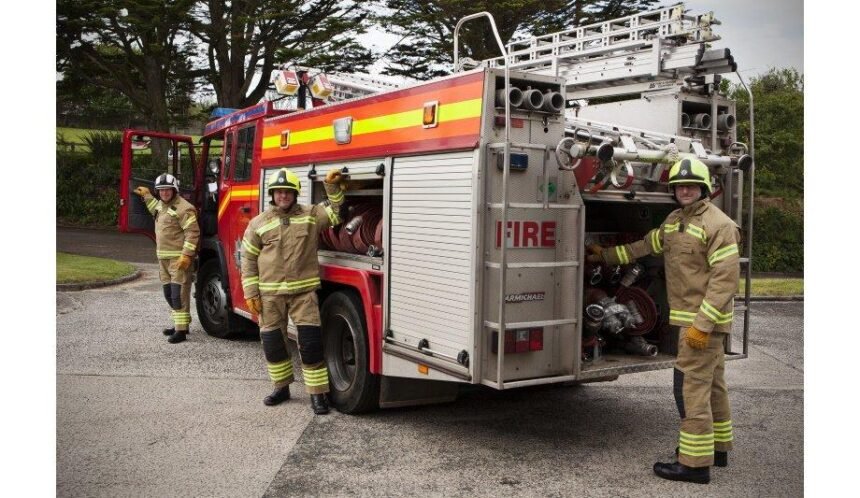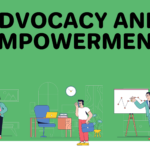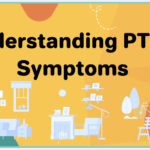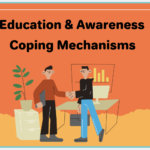The causes of PTSD can vary widely, as it may arise from exposure to various traumatic situations, including military combat, physical assault, natural disasters, accidents, or serious illness. Post-Traumatic Stress Disorder (PTSD) is a complex mental health condition that can develop after an individual experiences or witnesses a traumatic event. This disorder disrupts the lives of countless people worldwide, making it essential to understand its symptoms, causes, and the ways it manifests in daily life. Symptoms of PTSD often fall into four primary categories: intrusive memories, avoidance, negative changes in thinking and mood, and changes in physical and emotional reactions. Individuals may experience flashbacks, nightmares, or severe anxiety related to the distressing event they encountered, which can significantly hinder their ability to function normally.
The causes of PTSD can vary widely, as it may arise from exposure to various traumatic situations, including military combat, physical assault, natural disasters, accidents, or serious illness. The prevalence of PTSD is notable, with studies indicating that approximately 7-8% of the population will experience it at some point in their lives. Risk factors for developing PTSD include a prior history of trauma, mental health conditions, and lack of supportive social networks. As these factors contribute to the likelihood of an individual developing PTSD, understanding the breadth of potential triggers helps to contextualize John’s journey and the broader challenges faced by others.
PTSD’s impact extends beyond the individual, affecting families, friends, and communities. It can hinder personal relationships and professional endeavors, as the emotional and psychological toll often requires significant adjustments in one’s lifestyle. Addressing PTSD involves acknowledgment of the condition, supportive therapies, and encouragement for open discussions surrounding mental health. By framing John’s struggle within this wider context, an accurate depiction of the challenges faced by individuals with PTSD can be realized, prompting a necessary discourse on awareness and compassion in mental health matters.
John’s Background: A Life Before PTSD
John was born in a small town, surrounded by a close-knit family that fostered a sense of security in his early years. His parents, both teachers, instilled a love for learning and a passion for knowledge in their children. John was the eldest of three siblings, and his childhood was marked by joy and innocence, filled with laughter, family gatherings, and school activities. This nurturing environment played a pivotal role in shaping his character, promoting values such as responsibility, respect, and compassion.
As a student, John excelled academically and was involved in various extracurricular activities. He participated in sports, particularly soccer, and often showcased his leadership skills as a team captain. His teachers admired his dedication and enthusiasm, and he became a role model for younger students. This period of his life was characterized by ambitions, dreams, and a clear vision of the future, all steering him towards what he believed was a promising path.
The stability of John’s life continued through his high school years. He developed close friendships and experienced memorable moments, such as graduation day, which further solidified his hopes for a bright future. Following high school, John pursued a degree at a local university, immersing himself in his studies and making connections that would benefit him professionally. However, during this time, he encountered some challenges, including academic pressure and personal expectations, which began to introduce stress into his life.
Nevertheless, John’s resilience had always been a defining trait. He tackled obstacles head-on, believing that each challenge offered an opportunity for growth. This vital backdrop of resilience and optimism set the stage for understanding the profound impact of the trauma he would later face, highlighting the stark contrast between his pre-trauma life and the struggles that followed.
The Trigger: The Event that Changed Everything
John’s journey into the depths of post-traumatic stress disorder (PTSD) began on an otherwise ordinary day that quickly spiraled into chaos. He was serving as a firefighter, a profession he embraced with a sense of duty and pride. However, one fateful incident during a particularly intense wildfire changed everything. As John and his team battled the raging inferno, the unpredictability of nature turned against them. Amidst thick smoke and blistering heat, an unexpected flare-up trapped John, separating him from his colleagues.
Under the intense pressure of the moment, John faced a life-and-death situation that was far more than he had trained for. As the flames encroached, he was forced to make a harrowing decision—leave behind a fellow firefighter who had fallen and was unable to move or risk his own life. John chose to retreat, but the weight of that choice tormented him. The immediate aftermath was a blur; he was treated for smoke inhalation, yet the psychological scars ran much deeper than any physical ailment.
In the weeks following the incident, John found himself grappling with persistent flashbacks and intrusive memories related to the event. Normal routines became unbearable as anxiety consumed him. He avoided places associated with the wildfire, and even everyday activities like driving triggered overwhelming panic. The repercussions of that day’s events seeped into every aspect of life, from relationships to professional obligations. The once vibrant individual gradually slipped into isolation, plagued by guilt and shame for surviving while others did not. This transformative event marked the beginning of his struggle with PTSD, leading to a profound impact on both mental and emotional well-being.
Recognising the Signs: John’s Struggle with Mental Health
John’s journey with post-traumatic stress disorder (PTSD) began with a blend of denial and confusion. Initially, he attributed his restless nights and bouts of anxiety to stress and fatigue rather than acknowledging a deeper issue. His experience exemplifies the difficulty many face when trying to identify the signs of mental health conditions. Symptoms such as irritability, flashbacks, and emotional numbness can often be misinterpreted or overlooked completely. It is common for individuals to live in a state of unawareness regarding PTSD, a condition that affects countless people yet remains shrouded in stigma.
As John grappled with the prevalence of these symptoms, he wrestled with feelings of isolation. Many misconceptions surrounding PTSD contribute to this struggle. A prevalent myth is that the disorder only affects combat veterans; however, individuals encountering various traumatic events, such as accidents, natural disasters, or assaults, can also develop PTSD. John’s experiences highlight the importance of recognizing that trauma can manifest in various forms, making awareness crucial for understanding and support.
In the early stages of his condition, John often dismissed his feelings as normal reactions to stressful situations, perpetuating a cycle of confusion and self-doubt. Gathering information about PTSD proved to be a pivotal moment in his journey. He began to see his symptoms not as personal failings but rather as legitimate responses to trauma. This shift in perspective allowed him to accept the need for help, ultimately leading to seeking therapy and connecting with support networks. Recognizing the signs of PTSD is not merely the acknowledgment of symptoms; it is also about understanding the broader implications of mental health, fostering empathy, and breaking down the barriers imposed by misconceptions.
Finding Hope: The Importance of Community
Community support plays a crucial role in the recovery journey for individuals coping with post-traumatic stress disorder (PTSD). For John, the healing process was significantly enhanced by the presence of a supportive network comprised of friends, family, and fellow survivors. These connections provided him with a sense of belonging that had been elusive during darker moments of his struggle. They instilled a renewed sense of hope and underscored the fact that he was not battling his demons in isolation.
One of the key components of community support is the ability to share experiences. John found solace in a support group where he could openly discuss his feelings and confront the challenges of PTSD without fear of judgment. Hearing others share their stories allowed him to recognize that he was not alone in his struggle. This shared vulnerability fosters an environment where individuals can empathize with one another, leading to powerful bonds that promote healing.
Anecdotes from those within John’s network further illustrate the importance of community during his recovery. His close friend Laura recalled, “When John first opened up about his PTSD, it felt like a weight had been lifted. I could see he was desperate for understanding, and being there for him was, in turn, healing for me.” Such testimonials highlight how community relationships can provide mutual support and strength, creating a ripple effect that enhances everyone involved.
Reaching out to friends and family also brings additional layers of support. John’s mother, in her reflection, mentioned, “It was hard to watch him suffer, but being present and listening to his struggles reaffirmed our bond. I knew we would face this together.” This statement encapsulates the essence of community—its ability to unite individuals in the face of adversity. The road to recovery may be fraught with challenges, but the presence of a supportive community can illuminate the path forward.
Therapeutic Approaches: John’s Path to Healing
Throughout John’s journey with post-traumatic stress disorder (PTSD), he engaged in various therapeutic approaches that significantly contributed to his healing process. One of the foremost methods he pursued was cognitive-behavioral therapy (CBT). This evidence-based approach helped John identify and challenge the negative thought patterns associated with his trauma. By learning to reframe these thoughts, John gradually reduced the anxiety and emotional distress that manifested as a result of his trauma, which laid a solid foundation for further recovery.
In addition to CBT, John participated in group therapy sessions. These sessions provided him with a supportive environment where he could connect with others who shared similar experiences. The sense of community fostered in these groups proved invaluable, as it helped reduce feelings of isolation and supported John’s understanding of his PTSD. Sharing coping strategies with peers further enhanced his coping mechanisms, making him feel less alone in his struggles.
Mindfulness practices also played a pivotal role in John’s healing journey. Through meditation and deep-breathing exercises, he learned techniques to remain grounded in the present moment, reducing intrusive thoughts and flashbacks associated with his PTSD. Such practices not only calmed his mind but also improved his emotional regulation, allowing John to navigate everyday challenges without becoming overwhelmed.
Moreover, John explored alternative therapies such as art therapy and yoga. These modalities provided him with creative outlets for expression, enabling him to process his emotions in a non-verbal way. The physical aspect of yoga helped to reduce stress and tension in his body, further supporting his emotional healing. Collectively, these therapeutic approaches created a comprehensive framework for John to address his PTSD, ultimately enhancing his quality of life.
The Role of Education: Learning About PTSD
Education plays a pivotal role in understanding Post-Traumatic Stress Disorder (PTSD), both for individuals experiencing it and their support networks. For John, acquiring knowledge about PTSD was a crucial step in his recovery. By learning the symptoms and causes associated with this mental health condition, he began to demystify the challenges he faced following his traumatic experiences. This newfound understanding not only clarified his feelings and reactions but also helped him acknowledge that PTSD was a medical condition deserving of attention and compassion.
Furthermore, education about PTSD can play a significant role in dismantling stigma associated with mental health issues. When individuals, like John’s family and friends, become informed about the realities of PTSD, they are more equipped to provide meaningful support. Misconceptions surrounding mental health often lead to isolation and misunderstanding, which can exacerbate the distress experienced by the individual. By educating themselves about PTSD, John’s support network was better able to empathize and respond appropriately to his needs, thereby creating an environment that fostered healing.
Educational initiatives about PTSD also empower individuals to take proactive steps in their recovery journey. As John dove deeper into articles, workshops, and support groups focused on PTSD, he not only gained insights into effective coping mechanisms but also cultivated resilience against triggers. This knowledge enabled him to recognize early signs of distress, thereby implementing strategies to manage his symptoms before they escalated. Additionally, John’s engagement with educational resources gave him a platform to advocate for himself and others, inspiring those around him to further their understanding of mental health challenges.
In essence, education is instrumental in the journey of recovery from PTSD, equipping both individuals and their families with the tools necessary for healing and support. Through continued learning and advocacy, the journey toward living with PTSD can transform from one of isolation to one of empowerment and connection.
Personal Growth: Overcoming Adversity
John’s journey with PTSD has been marked by significant trials, but within these challenges, he has discovered a path toward personal growth and resilience. Facing trauma is undeniably daunting, yet John learned to confront his fears head-on rather than allowing them to dictate his life. This experience has underscored the notion that adversity can serve as a catalyst for profound self-discovery. By engaging in therapy, practicing mindfulness, and fostering connections with others who understand his struggles, John has begun to reclaim his narrative.
Moreover, John’s journey illustrates how vulnerability can be a source of strength. Embracing his vulnerabilities has allowed him to forge deeper relationships and foster a supportive community. This newfound support system has been essential in navigating the complexities of PTSD, and it serves as a reminder that no one should traverse such a journey alone. Each small victory, be it a day free from anxiety or reconnecting with loved ones, has fortified his resolve and reaffirmed his worth.
As John traverses this path, he has also recognized the importance of self-compassion. He shifted from judging himself harshly for his struggles to embracing them as integral parts of his story. This transformation has empowered him to approach life with a sense of agency, viewing obstacles not as impediments but as opportunities for growth. Through this lens, he has gained invaluable insights about perseverance and the human spirit’s ability to endure.
John’s journey offers a powerful testament to the resilience inherent in us all. By actively choosing to face his challenges, he has transformed adversity into a vehicle for personal development. His story exemplifies how, even in the depths of darkness, one can emerge stronger, wiser, and more resilient than before.
Moving Forward: John’s Vision for the Future
As John reflects upon his journey through the challenges posed by PTSD, he recognizes the importance of cultivating a positive outlook for the future. The emotional turmoil associated with post-traumatic stress disorder can often feel overwhelming, but John has dedicated himself to finding ways to navigate this complex landscape while fostering hope and resilience. His aspirations are firmly rooted in continual growth, emphasizing a commitment to maintaining mental well-being.
One of John’s long-term strategies is establishing a robust support network. He acknowledges the significance of surrounding himself with understanding friends and family who can provide encouragement and a sense of belonging. Additionally, he participates in various support groups, sharing experiences with others who face similar struggles. This communal approach not only offers comfort but also creates a shared understanding that facilitates healing.
Furthermore, John prioritizes self-care as a fundamental component of his journey toward recovery. Regular physical activity, mindfulness practices, and focused breathing exercises have emerged as vital elements in his lifestyle. These practices help mitigate anxiety and improve his overall outlook. By integrating these strategies into his daily routine, John has fostered a sense of empowerment, which has been pivotal in reshaping his narrative from one of despair to resilience.
Looking ahead, John envisions a life enriched with purpose and fulfillment. He has set ambitious goals that include pursuing further education, engaging in community outreach programs, and advocating for mental health awareness. By channeling his energy into these pursuits, John aims to inspire others who may be grappling with similar challenges. His story serves as a beacon of hope, illustrating that recovery is not just a possibility, but a tangible reality within reach.





